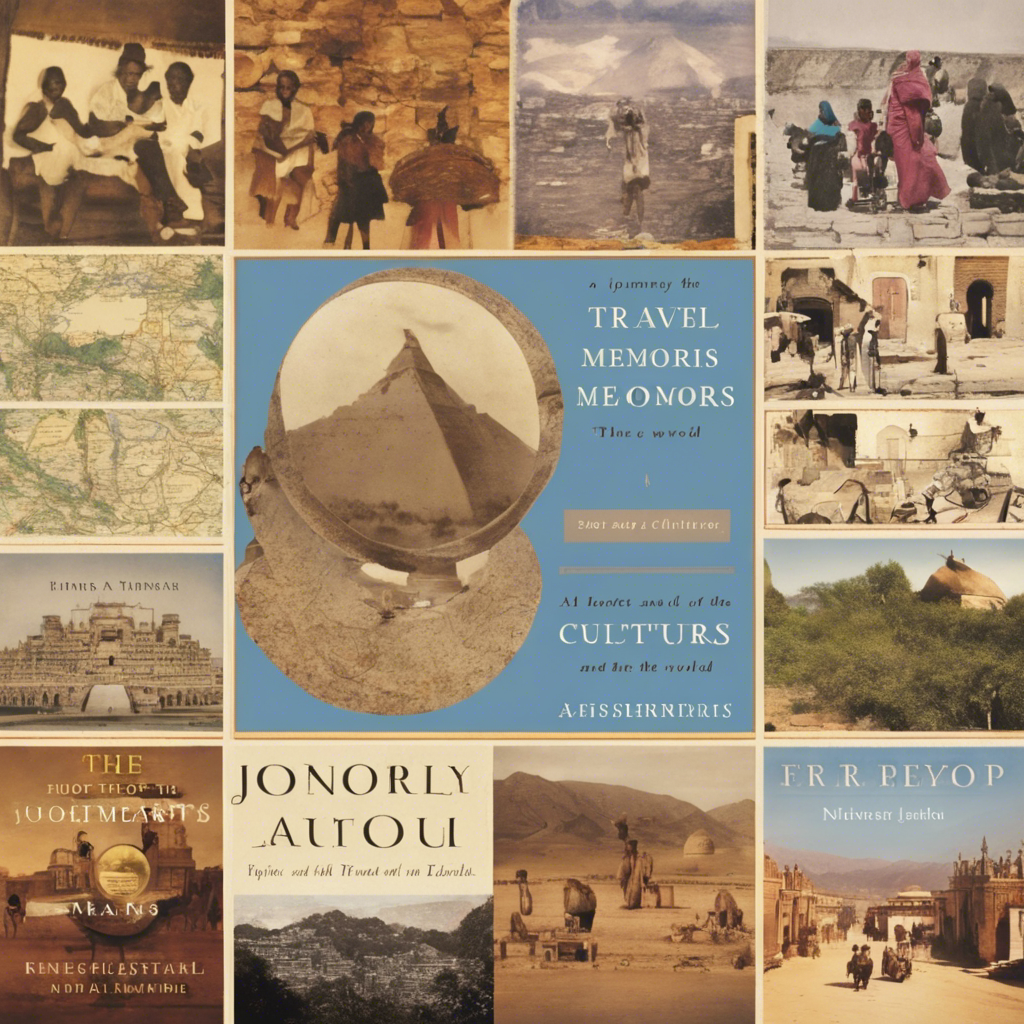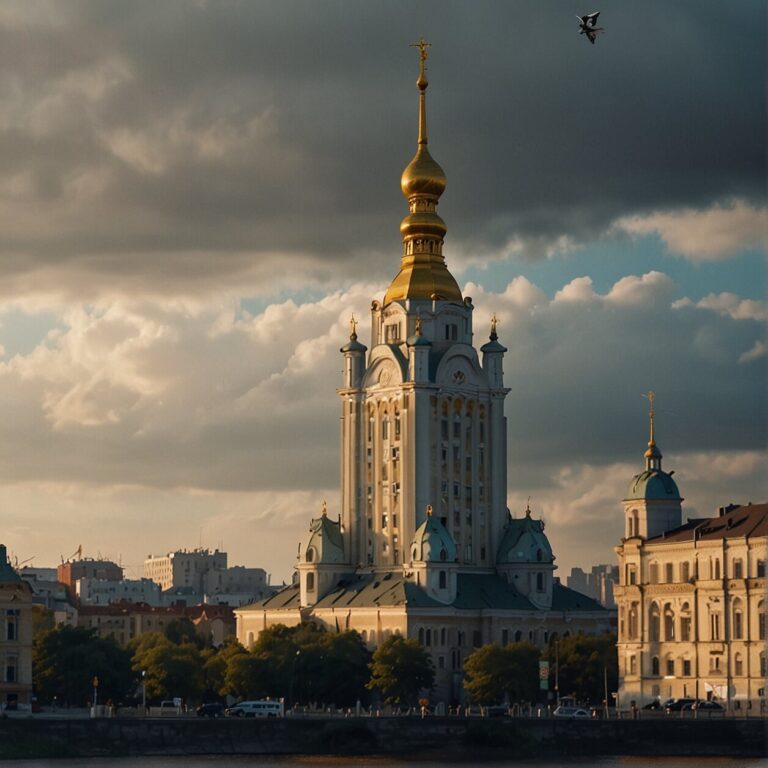Travel Memoirs: A Journey into the Hearts and Cultures of the World
Picture this: You’re nestled comfortably in your favorite reading nook, a travel memoir in your hands. Your heart races with every page, taking you on journeys to destinations miles away; walking on the sandy beaches of Bali, trekking up the challenging heights of the Himalayas, weaving through the bustling bazaars of Marrakesh, or exploring the rich histories of Roman ruins. Yet, these memoirs serve a purpose beyond mere escapism. They unlock a deeper understanding of the world around us, offering immersive insights into the lives, cultures, and realities of places and their people. Travel memoirs are not just about the destination; they are about the journey itself, and what it teaches us.
Why are these glimpses so essential, you may ask? It’s simple. Travel memoirs cultivate empathy, promote cultural sensitivity, and work towards breaking stereotypes. They highlight the authenticity of places, taking us beyond the glitzy tourist spots to the heart of the local community. In this article, we’re going to delve into the enriching world of travel memoirs, their educational value and how they can challenge and change our perceptions of different cultures.
“Travel is more than the seeing of sights; it is a change that goes on, deep and permanent, in the ideas of living.” – Miriam Beard
- Travel Memoirs: They’re not just books, they’re catalysts of change
- How Travel Memoirs Can Influence Our Perception of the World
- The Authenticity of Locations: A Close-up View
- Breaking Stereotypes: A Look at the Lessons Learned
- Cultural Sensitivity: The Power of Travel Memoirs
Immersive Exploration: How Travel Memoirs Teach Us about the World
Visualize walking through the narrow lanes of an Italian town, or exploring the vast wilderness of Africa. Creating these images in your mind feels surreal, doesn’t it? That’s the transformative potential of travel memoirs: they teleport us into the shoes of the traveller, offer us a virtual experience through their words, and make foreign places and cultures feel accessible.
These memoirs teach us about the world in intimate and unexpected ways. They unravel the mystery of a place, its customs, cuisine, and the rhythm of local life. Such vibrant descriptions evoke more than just a place’s physicality. They shed light on the societal norms, the community spirit, local traditions, and the complex interplay between people and their environment. So you don’t merely read about a location; you come to understand and appreciate its essence.
Take, for example, the popular memoir “Under the Tuscan Sun”. This isn’t merely a tale about the author’s escapades in Italy; it’s an immersive journey that explores the warmth of Italian people, the rustic charm of rural towns, and the seductive allure of Italian cuisine. While reading, one doesn’t just absorb the story; one absorbs the entire cultural fabric that the author unravels.
This power of travel memoirs to unmask the world and its diverse cultures can be deeply enlightening. They encourage us to broaden our perspectives and cultivate a sense of empathy for the people and cultures we would otherwise know little about. In a society prone to stereotypes and misconceptions, travel memoirs prove to be effective tools for cultural understanding, slowly breaking down the barriers built by unfamiliarity.
The Authenticity of Places: A Close Look at Locations through Travel Memoirs
Imagine being transported to the cobblestone streets of France, the vibrant markets of Morocco, or the tranquil beaches of Thailand right from your living room. That’s the power of a well-written travel memoir. They allow you to visualize and almost experience the authenticity of a location without actually stepping foot there.
Travel memoirs often provide rich descriptions that go beyond what any guidebook or travel blog will tell you. These authors aren’t just passing through the places they describe, but living, working, and fully immersing themselves in the culture. As a result, they are able to paint a truer, more nuanced picture of a destination, encompassing its history, its atmosphere, and the day-to-day experience of its inhabitants.
Take, for example, the memoir “A Year in Provence” by Peter Mayle. He is more than a travel writer; he tells stories about local traditions, people, and the slower pace of life in rural France. It brings Provence to life with such vibrancy and color that you can almost taste the wine and feel the Mediterranean sun on your back.
In “Eat, Pray, Love”, Elizabeth Gilbert takes you on a journey across Italy, India, and Indonesia. The book reveals as much about the food, people, and culture of these places as it does about Gilbert’s personal growth journey. You smell the Italian pasta, feel the spiritual tranquility of an Indian ashram, and understand the complexities of Balinese culture right along with her.
Let’s not forget about Pico Iyer’s stunning memoir “The Lady and the Monk”. Here, Kyoto, Japan is both a backdrop and a central character itself. Iyer’s vivid descriptions pull you right into the heart of a culturally rich Japan, far away from the neon lights of Tokyo.
Through these memoirs, readers gain a profound sense of place and culture. They help us understand that destinations aren’t just points on a map, but living, breathing entities characterized by their people, traditions, and history. To read a travel memoir is to go on a journey, and often, that journey is not just about the miles covered, but about the human experiences shared and the deeper understanding gained about our extraordinary world.
The Art of Empathy: Learning from the Hearts of People through Travel Memoirs
If you have ever read a travel memoir, you may have been swept away by vivid descriptions of distant locales beyond common tourists’ tread. But travel memoirs usually offer us more than visual imprints and culinary tales. Most importantly, they offer a glimpse into the common threads that bind us, the empathic bonds that remain the same no matter where we tread on this beautiful planet.
Yes, that’s what makes them so impactful. Imagine you are sitting at home, a cup of coffee in hand, immersed in a narrative transporting you to the hustling streets of Bangkok, the serene mountains of Peru, or the vibrant Medina of Marrakech. You read about the local inhabitants, their struggles, their joy, their traditions. You find humanity in their stories, a shared feeling of existence. Not just exotic “otherness” but familiar human spirits like ours that spark a profound sense of connection. These narratives cultivate empathy within us, encouraging mutual understanding.
Sometimes, travel memoirs might not even be about extravagant adventures or out-of-this world experiences. Often, they are about ordinary people living ordinary lives—and yet these captured moments of simplicity and authenticity can evoke extraordinary feelings within us as readers.
Take, for instance, Martha Gellhorn’s “Travels With Myself and Another.” In her book, Gellhorn shares her experience of traveling to different parts of the world, not glossing over discomfort or hardship, but sharing it in all its raw messiness. As readers, we don’t merely get to spectate her journey; we are right there with her, feeling her frustrations, her delight, and her revelations. Through this vicarious experience, we too grow, develop, and learn—as she does.
It’s the same thread of empathy that pulls us when we read the tales of resilience from Chris McCandless in “Into The Wild” or Robyn Davidson’s transformative journey across the vast wilderness in “Tracks.”
Travel memoirs provide us with shared stories of the human heart—ones that transcend national, cultural or ethnic borders, ones that gently remind us of our shared humanity in a diverse world. Through these pages, we discover that we are more alike than different, an echoing sentiment voiced by Maya Angelou: “We are more alike, my friends, than we are unalike.”
So, the next time you pick up a travel memoir, journey into its heart. Allow yourself to resonate with the lives written on these pages, allow your empathy and understanding to grow. It’s not merely about seeing the world; it’s about connecting with it on a human level.
Breaking Stereotypes: Lessons Learned from Travel Memoirs
Do you recall the last time you flipped open a book and were instantly transported to a far-off land, meeting distinct individuals exhibiting unique cultural traits? These are the experiences typically etched within the pages of a travel memoir.
Loaded with descriptive prose and vivid metaphors, travel memoirs are like open windows revealing not only the stunning landscapes and intricate architectural marvels but, more importantly, the author’s interactions with the natives—providing unrivaled insight into their daily lives, traditions, and perspectives. This intimate connection results in a profound dismissal of preconceived stereotypical views.
Some of the most impactful travel memoirs, like Elizabeth Gilbert’s ode to self-care, ‘Eat, Pray, Love’, or Bill Bryson‘s hilarious ‘A Walk in the Woods’, have this transformative effect. They unearth the layers of societal norms, and provoke readers to reassess their own stereotypes about these hitherto unknown societies.
As an inquisitive reader, you begin questioning your pre-set notions and start examining the reasoning behind the customs and values that were unknown to you. That’s the power of travel memoirs, they allow readers to reassess their stereotypical beliefs, encouraging them to adopt a more informed, open-minded, and empathetic worldview.
In a time where our realities are massively dictated by quick snippets of information and condensed soundbites on social media, travel memoirs manifest as an unconventional pedagogical tool. By immersing us in the author’s journey, they encourage us to interact holistically with the data presented, rather than making snap judgments.
In conclusion, travel memoirs have immense power—they paint detailed portraits of unique civilizations and societal structures, instigate introspection, challenge preconceived assumptions, and most importantly, highlight the shared human experience, fostering understanding and unity across borders. And that, dear reader, is the transformational impact of well-constructed travel memoirs. They convey that the world is diverse, culturally rich, and far from the stereotypes we often hold.
The Power of Travel Memoirs in Building Cultural Sensitivity
Consider a travel memoir as your personal cultural guidebook, letting you in on the secret nuances that make up the societal tapestry of diverse locations. But how exactly do these first-hand accounts aid in constructing cultural sensitivity?
First, they facilitate an understanding of the values and principles of different cultures from the perspective of an outsider, yet also from someone who’s experienced it up-close. This hybrid awareness presents a gold mine for readers to always be mindful and respectful of these cultural norms when they themselves travel or interact with people from these cultures.
Moreover, travel memoirs offer you experiences beyond your physical boundaries and personal comfort zones. Understanding another culture is not just about visiting the place or learning the language, it’s about immersing oneself in its societal behaviors, festive rituals, traditional cuisines, and even the rhythmic pattern of its local tongue. It’s about experiencing a place with the heart and the mind.
Furthermore, these recounting narratives convey the struggles, the victories, and the human elements of the people living in these cultures, instilling a sense of empathy within readers. It’s not just about exploring the unseen facets of different cultures, but also about understanding our shared human experiences. In this understanding, readers are increasingly encouraged to develop an open mind and a sensitive approach towards cultural differences.
Ultimately, gaining cultural sensitivity through travel memoirs encourages more inclusive behavior, assuaging misinterpretations, and fostering mutual respect. It allows the reader to step into someone else’s shoes, experience the world from a diverse perspective and thus promotes understanding, acceptance and, ultimately, unity.







